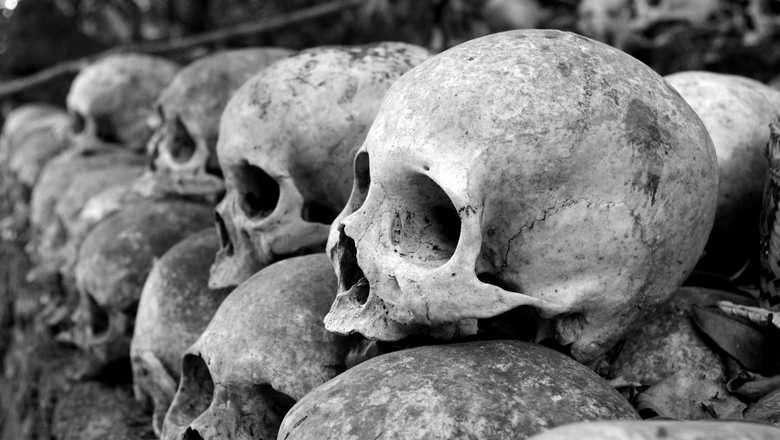What makes a novel a ‘horror’? The definition is surprising tricky to nail, largely because horror fiction isn’t the only kind of literature to inspire shudders, fear and dread.
I’m sure horror critic and biographer Douglas Winter was thinking about this difficulty too when he declared that horror isn’t a genre at all, but an emotion.
I see where he’s coming from. After all, horror can trace its roots back to the bible, the Spanish Inquisition, Elizabethan revenge tragedies, the gothic novel and the industrial revolution. But for me, these complex roads lead to a definite destination.
That’s why I’ll stick my neck out here and say that horror is a genre characterised by the intention to frighten, disturb or disgust the reader. It frequently sets out to do all of these at once. Of course, the best horror fiction is nuanced and achieves much more besides, but those are its primary aims.
The subgenres of horror that best blend with speculative fiction, in my view, are:
Paranormal horror
Paranormal horror brings ghosts, spirits, demons and their activities into the everyday world. As a writer of paranormal horror, you must decide how to introduce your characters to the supernatural.
A classic setting is the haunted house, whose timeless equilibrium is disturbed by new, curious residents or paranormal investigators. Two gleaming examples of this approach are Shirley Jackson’s landmark work The Haunting of Hill House and its worthy successor White is for Witching by Helen Oyeyemi.
Joe Hill’s debut novel Heart-Shaped Box deserves a special mention here for delivering the double whammy of a protagonist with an especially reckless approach to the paranormal, and a haunted suit.
Creature horror
In paranormal horror we don’t often get to see the source of our fear, but in creature horror it takes centre stage. With creature horror, the emotional punch comes from the presence of strange and terrible beings who aren’t spirits or demons, but aren’t normal human beings or animals, either. In short, they’re monstrous.
Sometimes – as with zombies – the creatures attack, just because that’s what they do. But the most effective works of creature horror paint a more complex picture, and inspire tender feelings in the reader as well as fear and revulsion.
Of course, the seminal work of creature horror is Mary Shelley’s Frankenstein, and Shelley certainly makes us feel pity for Dr Frankenstein’s nameless creature. But for a truly disturbing and heartstring-plucking example of creature horror, look to Clive Barker’s Cabal. Barker’s creatures, the Nightbreed, are a wonderful, fearsome accomplishment.
Weird tales
Weird tales hark back to the time before horror came of age. Many of these works in fact come close to Douglas Winter’s notion of horror as an emotion rather than a category.
As the name suggests, weird tales are not about jumps, scares and shrieks, but offer a subtler experience of horror. Writers of weird fiction tend to unsettle their readers, before unsettling them some more. JG Ballard is a master of this approach, and his short stories admit the reader to a baffling, quietly petrifying, queasy-making universe.
The supernatural frequently features prominently in weird tales, although technology also stands in as the source of dread. But sometimes weird stuff just happens, and the reader is taken on a journey to the logical consequences. Brian Evenson’s Last Days, part hardboiled cop novel and part charnel-house nightmare, is one such story.
The original weird tales were written in the late 19th and early 20th centuries by singular authors like Franz Kafka and HP Lovecraft, but the tradition most certainly continues. The short story is a thriving form in weird fiction, and you can get a comprehensive overview from the anthology The New Weird edited by Jeff and Ann VanderMeer.
Speculative horror – the fearful ‘What if …?’
Horror is defined by emotion. It’s all about touching on primal triggers to elicit feelings of terror, disorientation and even pity.
This sets the bar high for the writer, because a clever speculative idea isn’t enough for horror. You’ve got to engage your readers on a more fundamental level.





